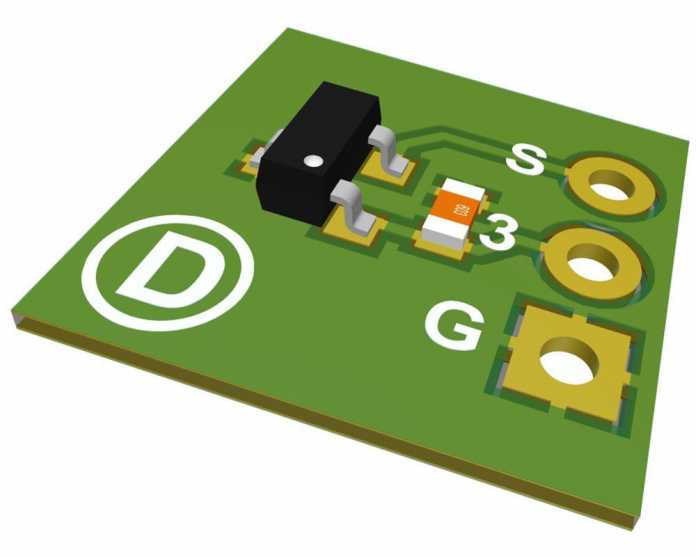The Magnetic Sensor Market is set to grow from its current market value of more than $2 Billion to over $3.5 billion by 2025; as reported in the latest study by Global Market Insights, Inc.
The increasing implementation of navigation systems in numerous applications including smartphones, tablets, gaming consoles, automobiles and commercial services, such as transportation and delivery services, is driving the magnetic sensor market. These components provide an effective way to measure multiple mechanical quantities including speed sensing, position sensing, and angle of rotation. These sensors do not require physical contact to detect the quantities, making them highly durable and offer a longer life. Other advantages, such as very low power consumption, compact size, and sustainability at different environmental conditions, are resulting in the widespread adoption of these components, augmenting the market.
Giant Magnetoresistance (GMR) technology is expected to considerably influence the magnetic sensor market as there is a growing preference for these components in biosensors, hard disk drives and microelectromechanical systems. They are highly preferred for applications requiring the measurement of low magnetic fields specifically in small volumes. This technology works by displaying the change in their resistance depending on the external magnetic field and provide better feasibility of fabrication. These can be integrated with several standard technologies, such as CMOS chips, thereby increasing their adoption and propelling the magnetic sensor market growth. Some of the devices implementing GMR sensors are CMOS standard microelectronics, current strips, and coils.
The aerospace industry will significantly contribute to the growth of the magnetic sensor market. They are integrated in aircraft equipment and play a vital role in determining aircraft direction by measuring the earth’s magnetic field. These sensors are also used along with the magnets as safety interlocks to ensure that the components of aircraft are properly positioned. The demand in other applications, such as for tracking position of rotating components and measuring the alignment between moving aircraft components, will propel the industry growth for applications in the aerospace industry. Moreover, the aerospace industry is witnessing significant growth particularly in the U.S. According to the U.S. Department of Commerce, in 2018, the U.S. aerospace industry contributed USD 151 billion to export sales of the country, providing high growth potential to the market.
Europe is one of the major regions in the magnetic sensor market particularly due to the presence of large automotive industry and several automotive manufacturers including Volkswagen, Mercedes-Benz, BMW, and others. According to the European Automobile Manufacturers Association, 19.6 million motor vehicles were manufactured in Europe in 2017, contributing to 20% of the global production. The European automotive manufacturers are highly inclined towards implementing a greater number of features in cars owing to the demand for premium automobiles and the presence of high-income population. Other factors, such as the growing trend of connected cars, IoT, and autonomous driving vehicles, implementing the navigation and tracking systems will create growth opportunities for the market in the region.
Some of the major companies operating in the magnetic sensor market are Infineon Technologies, STMicroelectronics, Magnetic sensors Corporation, Allegro Microsystems, Texas Instruments, Inc., Analog Devices, TE Connectivity Corporation, Memsic, Honeywell International, NXP Semiconductors, Asahi Kasei Microdevices, and Sanken Electric. The magnetic sensor market is highly fragmented with the presence of several manufacturers. The companies are focusing on developing new sensors, which are more reliable, durable, and provide better accuracy. In August 2017, Vishay Intertechnology introduced a new magnetic position sensor RAME027, particularly developed for applications such as machine tools, milling, robotics, electrical actuators, military, and industrial applications. This sensor is highly suitable for harsh environments such as shocks and vibrations. In June 2019, Variohm Eurosensor launched Euro-CMRx range of sensors based on hall effect technology designed for compact-sized devices and require extreme durability. The frequent product developments by companies will propel the market.
The magnetic sensor market is facing some challenges, which can limit the growth to some extent. One of the restraining factors for the market is the technological drawbacks of some of the sensor technologies, which can affect accuracy and performance. For example, the hall effect-based sensors are not capable of measuring the current flow for distance more than 10 cm. This issue can be overcome by using very strong magnets to generate very wide magnetic fields. However, it will add to the design difficulties and increase the cost. Accuracy is another concern with hall effect sensors as the determined values can be affected by external magnetic fields. They are sensitive to the environment and can be affected by magnetic fields generated by earth, power lines, and others, affecting the industry growth.
Click here for more information








